
-
Hi,
I did a small test to record in RAW 2.5K with the GH2 as the BMCC and i was surprised that it work perfectly, not because of the sensor but because the GH2 can offer a decent resolution with a awesome stability.
I was wondering what is the real limit of the GH2 in term of resolution ? (i'm talking about record video) ;)
I was thinking to make some footage with the GH2 in 2.5K Resolution, any risk ?
Can we leave this topic to discut about the resolution possibilities on the GH2 with hack ?
Thanks
-
Best comment ever: "Stop posting strange things."
-
Look at this test. Camera was locked on a tripod, exact same lens, distance. If you study closely 2k vs 24p you will see that 2k shot has slightly bigger frame than 24p. This means that it's not upscaled 1080p!
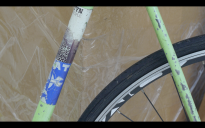
 2ka.png1280 x 800 - 1M
2ka.png1280 x 800 - 1M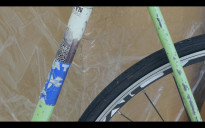
 24pa.png1280 x 800 - 1M
24pa.png1280 x 800 - 1M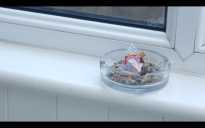
 2kb.png1280 x 800 - 1M
2kb.png1280 x 800 - 1M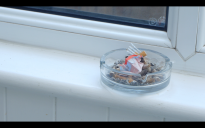
 24b.png1280 x 800 - 1003K
24b.png1280 x 800 - 1003K -
Hello post! Here is my test. Shot and edited in 2K, rendered in 1080p. I played with levels a bit.
-
if you post screenshots again, use a software like media player classic or vlc to take them, because your posted ones are cropped to 1920x1080. not your 2.5k resolution.
-
In other words, it may eat the GH3's lunch. For now.
Yeah, just as long as it's not raining. :)
-
In other words, it may eat the GH3's lunch. For now.
-
@vicx The GH1 MJPEG encoder could be patched to record in 4:2:2 color, but the GH2 will work properly only in 4:2:0 color depth. Both MJPEG and AVCHD are VBR encoders and will naturally reduce their bitrates when underexposed, since there is less light in dimly lit scenes to record. What's important, however, is not the bitrate, but how finely the MJPEG and AVCHD frames are quantized and encoded.
With the MJPEG patch in Flow Motion v2, I was able to maintain bitrates close to 100Mbps at very dim exposures. As illumination dims, the encoder uses finer quantizing factors, until it reaches quality levels comparable to Photoshop JPEG images saved at maximum quality.
The AVCHD patch in Flow Motion v2 is designed to maintain consistent motion picture quality over a wide range of exposure levels. Since it is a short-GOP, B-frame encoder, it does not need as much bitrate to maintain maximum image quality at low light levels as the MJPEG all-Intra encoder.
Typically, both MJPEG and AVCHD encoders will operate near 100Mbps peak in well-exposed scenes. As exposure levels dim, the AVCHD encoder's bitrate will drop while it maintains consistent quality levels. The MJPEG encoder's bitrate will remain high, as it will actually increase its image quality at dimmer exposure levels.
-
Topic renamed, moved to offtopic.
Changing MJPEG to big size values bring no added values, as serious guys made serious test long time ago.
-
Stop posting strange things.
-
I adjusted an old GF1 to shoot MJPEG at 90 mbit/s, and it is picking hues with ease. Certainly feels like 4:2:2. There is an elevated noise floor that kicks in at certain luma level and reduces useful dynamic range quite severely, though. Using contrast flattening lens filtration helped.
-
@LPowell When I first got my GH2 4 months ago the first thing I looked at was MJPEG in low light and in all truth I liked its relative performance compared to the other patch I was using at the time which was I think was Sanity. I have been on an obsessive learning curve since then so I have abetter idea about what I'm looking at. One of the things I continue to notice across all AVCHD patches is the starvation of data in low luma situations. Is this also a property of MJPEG. Does JPEG apply a perceptual compression technique related to luminance? Is the MJPEG constant quality or is it CBR.
Was it also resolved whether the MJPEG was 4:2:2 sampled or 4:2:0.
I can see from the Flat 4 thread that there is a hunger for specialist patches even with their limitations. So what sort of subject matter favours MJPEG over AVCHD at the same bitrates?
-
@Stray I doubt there's much value in going beyond 2048x1152. There's a limit to how much bitrate you can pump into the MJPEG encoder, and the more pixels you squeeze into each frame, the coarser the compression becomes. In my MJPEG patch, I was able to boost the bitrate up to 100Mbps with complete reliability on 30MB/sec Class 10 SD cards. It started to get finicky at higher bitrates, and its low-light performance wasn't as consistent, so I concluded 100Mbps was a healthy target bitrate.
-
@lpowell Just out of interest is there any point pushing the resolution higher than that ?
-
2048x864 is the correct setting for shooting with a 1.33x anamorphic adapter. To produce square pixels with normal, spherical lenses, you'd want to set MJPEG frame size to 2048x1152.
-
I'm talking nonsense, ignore me, sorry.
-
In France is late right now both 1080p/2.5K using same lens olympus 45mm 1.8
Edit : i do that tomorrow, it's really late, need to sleep...
Again is the same position, same moment check correctly, you go understand why is look like moving a little when is not but like i said again i go show more testing 2.5K MJPEG
I was already convinced that we really use the sensor capabilities in here but i didn't expected a good stability Yes the picture in here is useless but show that you can clearly see the difference if you take a look you don't need a zoom but check
The 2.5K is more wide you can see more stuff on the scene (check the border etc...) The 1080p is clearly no wide as the 2.5K and the stuff i see on 2.5K is out of scene in here
-
We've been through this with mjpeg allowing arbitrary resolutions, and IIRC noone was really convinced that it was actually using the resolution of the sensor as per the settings you gave. It seemed much more likely that the camera was performing scaling to the requested resolution. Also upscaling AVCHD gave better results than getting the camera to record mjpeg at a 2K resolution is my memory of this debacle.
Anyway, that screenshot comparison of your mouse on the table with an out of focus background is completely useless for any kind of good comparison (except maybe a lowlight performance comparison, which again there has been much talk/comparison here between mjpeg and AVCHD too) go out in the daylight and shoot something with a lot of detail, an awful lot (like trees, or bushes) with the same lens in AVCHD 1080p and then with your 2.5K setting. Then it will be easier to judge, and would be worth doing, cos my memory of this discussion on mjpeg and its resolution possibilites is that it remained unresolved. And as @TommiH said, the aspect ratio needs fixing. One thing I know people do do with the mjpeg settings is use them to shoot with anamorphic lenses so as to get the right resolution/ratio needed to unsqueeze the resulting footage.
-
@Neverprod What I'm seeing is that the aspect ratio on the 2.5K sample is squeezed and it's shot in a different angle in relation to the subject. Also I think the aperture is different... To my eyes it's hardly scientifically comparable. In my opinion, what you think is more resolution is simply less compression and faulty method of metering a difference of settings.
Mount your camera on a tripod, lock all variables on the camera, shoot some fine cloth or other repetitive matrix and post the results. I actually want to be proven wrong, because I'd rather like 2.5K resolution... :)
Please don't get offended, I'm just quite sure I'm right. Prove me wrong. :)
-
Did you really look both picture scene ?
Clearly not a upscale, if it was a upscale of the 720P/1080p i will not catch more stuff on my scene (look who many stuff you can see on 2.5K and on the 1080p) and it's exactly the same recording position moment ! in here we clearly (repeat again) use the sensor possibilities to take all the scene and not a simple software upscaler.
If i will can use the limit of the sensor, i will can take more stuff on my scene than the 2.5K
It's actually really giving me a true 2.5K resolution even a little bit more than the BMCC resolution.
That's why is was impressed to see a 2.5K at 30p working stable on the GH2, i didn't expected that much from the hardware of the GH2.
Now if i try to reach the 3K , i have too much instability that maybe can be fixed
-
@Neverprod I'm not trying to be rude, I just don't understand what you are after...
Do you mean you actually think that the video pipeline is actually delivering you 2.5K resolution? I mean Full sensor readout at 30fps and scaling down to 2.5K? The AVCHD version is clearly showing less detail, but that is because of compression, not because of actual resolution difference.
-
Now you still think that is a upscaling, seriously don't think i'm dumb thanks i know exactly what i'm saying
Again be more respectfull to other next time and not only me
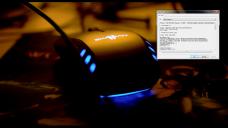
 2.5K GH2.jpg1920 x 1080 - 234K
2.5K GH2.jpg1920 x 1080 - 234K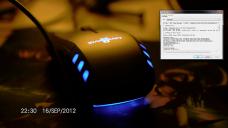
 1080p.jpg1920 x 1080 - 283K
1080p.jpg1920 x 1080 - 283K -
You still think that in MJPEG Mode 2.5K the image is upscaled... You understand that every DSLR/Hybrid and co have a 4K Sensor already ? the recording solution depend of the software and hardware using.
This is a true capture of 2560x1366 and not a upscale...i'm not talking about the AVCHD mode
Yes i'm a registered on the website so ?... i'm working for over in over years in the cinema industry, i know exactly what i'm talking about... also don't judge a person too fast ok... you don't even know me, thanks.
I'm talking about taking the advantage of the sensor capabilities not the upscaling..
It's you saying no sense... you don't even try to understand and just came to critic, you don't even know what i'm showing now.
Also you seem to don't understand what the resolution mean and what is for on a Sensor
-
Just post a screenshot from some detailed scenery/leaves shot in your 2.5k mjpeg vs shot on regular avchd in 24H - then we can see what you mean.
@all: there is a 2k mode in driftwoods patches. does anyone know which benefits it is supposed to have?
-
@Neverprod I'm perfectly calm. :) You just registered to this site, and yet you came up with a way to get the resolution bumped up to 2.5K? The image is upscaled, thats all. Your claim of real 2.5K resolution is nonsense.
If I understood you incorrectly, and you are talking about the advantages of upscaling the uncompressed image and then resizing it to the original source size, I apologize, but real 2.5K is not accessible with the tools we have available to us. :)
Here is a 2K test of mine:
;) Peace! :) -
Second result about a better resolution I try different know and unknown resolution that is related to the 2:39/1:78 etc... For now i find that the best height for the GH2 is 1366 after that, i can see some problem (maybe can be fixed) About the width i'm not sure yet but from my investigation, i find that the GH2 accept easily the 2560 size (2560x1366 with a display ratio of 1:85)
Fast test of 10seec
Video ID : 1 Format : JPEG Codec ID : jpeg Duration : 9s 500ms Bit rate mode : Variable Bit rate : 119 Mbps Width : 2 560 pixels Height : 1 366 pixels Display aspect ratio : 1.85:1 Frame rate mode : Constant Frame rate : 30.000 fps Compression mode : Lossy Bits/(Pixel*Frame) : 1.130 Stream size : 134 MiB (94%)
Maybe you would need to calm down ? if you are not interested for talking about, you can go play your troll somewhere else ?

 GH2Rtest.jpg1920 x 1080 - 211K
GH2Rtest.jpg1920 x 1080 - 211K
Howdy, Stranger!
It looks like you're new here. If you want to get involved, click one of these buttons!
Categories
- Topics List23,993
- Blog5,725
- General and News1,354
- Hacks and Patches1,153
- ↳ Top Settings33
- ↳ Beginners256
- ↳ Archives402
- ↳ Hacks News and Development56
- Cameras2,368
- ↳ Panasonic995
- ↳ Canon118
- ↳ Sony156
- ↳ Nikon96
- ↳ Pentax and Samsung70
- ↳ Olympus and Fujifilm102
- ↳ Compacts and Camcorders300
- ↳ Smartphones for video97
- ↳ Pro Video Cameras191
- ↳ BlackMagic and other raw cameras116
- Skill1,960
- ↳ Business and distribution66
- ↳ Preparation, scripts and legal38
- ↳ Art149
- ↳ Import, Convert, Exporting291
- ↳ Editors191
- ↳ Effects and stunts115
- ↳ Color grading197
- ↳ Sound and Music280
- ↳ Lighting96
- ↳ Software and storage tips266
- Gear5,420
- ↳ Filters, Adapters, Matte boxes344
- ↳ Lenses1,582
- ↳ Follow focus and gears93
- ↳ Sound499
- ↳ Lighting gear314
- ↳ Camera movement230
- ↳ Gimbals and copters302
- ↳ Rigs and related stuff273
- ↳ Power solutions83
- ↳ Monitors and viewfinders340
- ↳ Tripods and fluid heads139
- ↳ Storage286
- ↳ Computers and studio gear560
- ↳ VR and 3D248
- Showcase1,859
- Marketplace2,834
- Offtopic1,320









